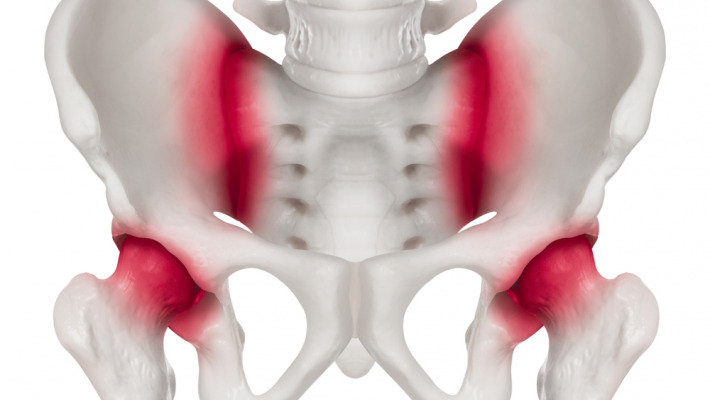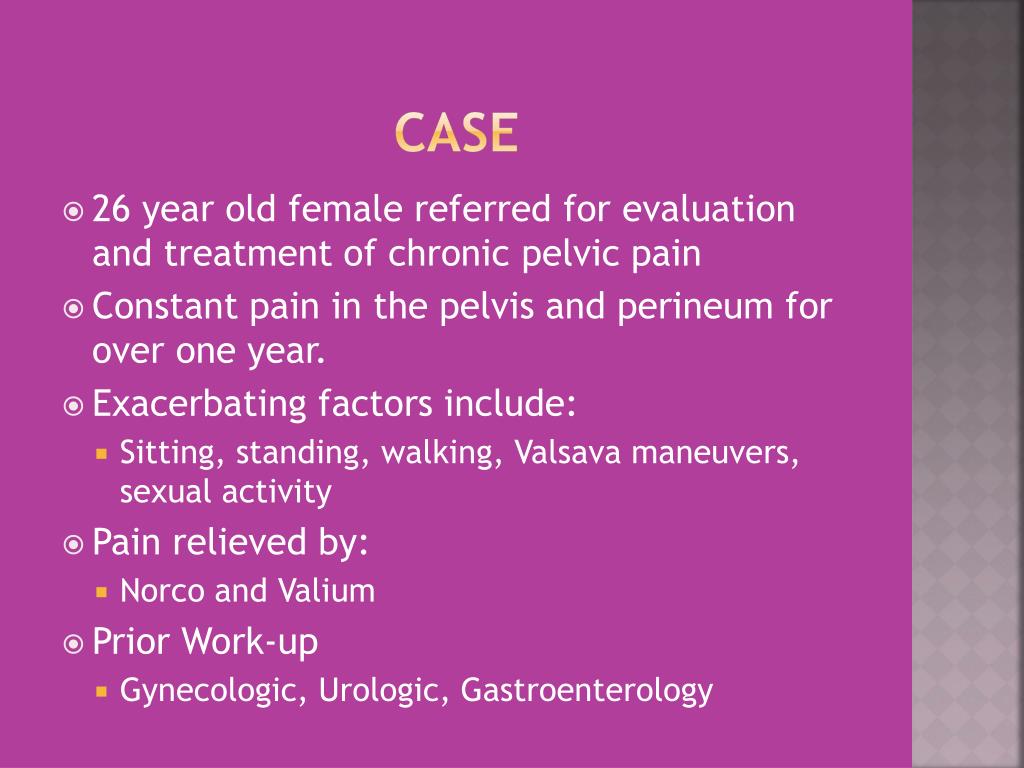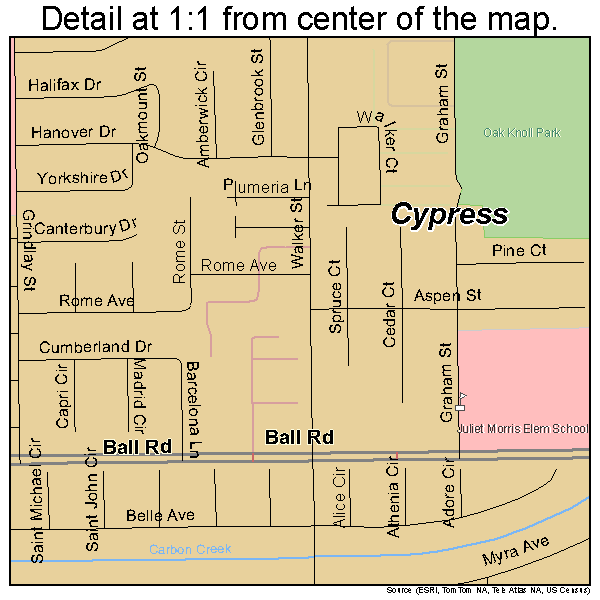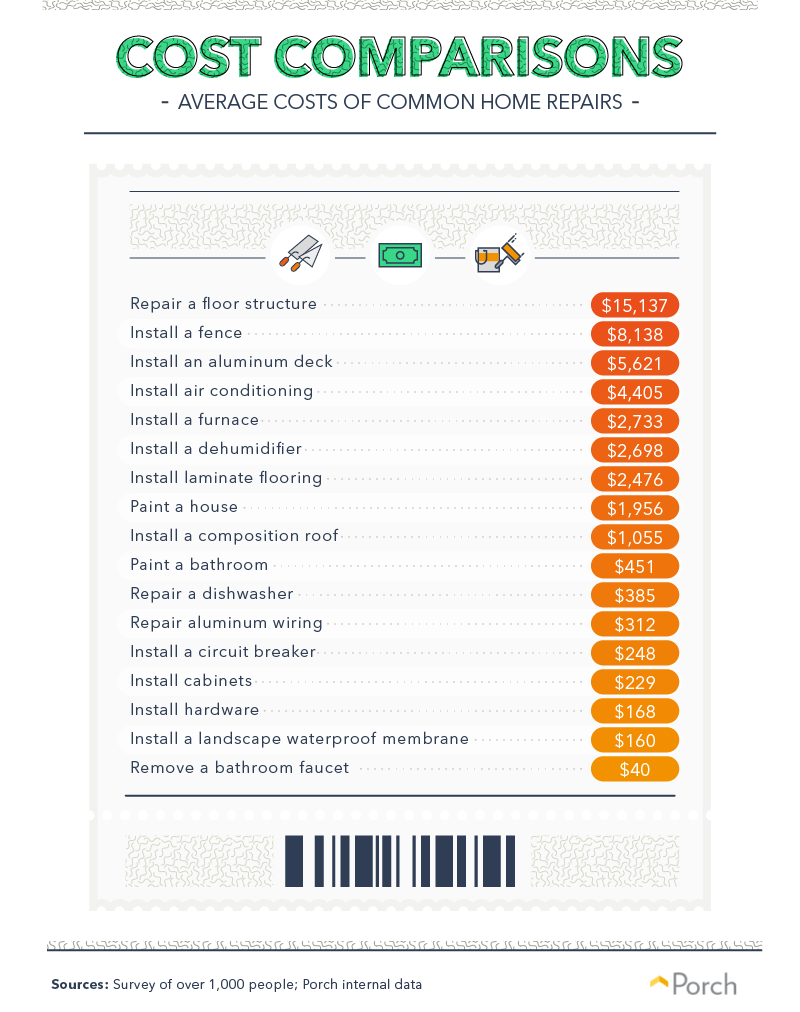Sometimes you’ll notice that this pain occurs or worsens when you walk or move around. This article discusses pelvic pain, causes, tests, treatment, and when to see your healthcare provider. Although pelvic pain often refers to pain in the region of women's internal reproductive organs, pelvic pain can be present in men, too, and can stem from multiple causes. Pelvic pain may be a symptom of infection or may arise from pain in the pelvic bone or in non-reproductive internal organs, such as the bladder or colon. In women, however, pelvic pain can very well be an indication that there may be a problem with one of the reproductive organs in the pelvic area . Pelvic pain is a common condition in women with a wide range of causes.

Pain relief may come from the release of endorphins, your body's natural painkillers, but that's only one of many theories about how acupuncture works. Acupuncture is generally considered a safe treatment. Relaxation techniques can help release tension, reduce pain, calm emotions and induce sleep. Many techniques can be learned on your own, such as meditation and deep breathing. There are different types of psychotherapy, such as cognitive behavioral therapy and biofeedback.
More health news + info
Pelvic pain can happen in all sexes and might stem from infections, abnormalities in internal organs or pain from your pelvic bones. Conventional treatment depends on the cause of the issue. Some common methods of treatment include NSAIDs, muscle relaxants and hormone therapy.

Patients can learn how to reduce muscle tension that leads to pain. Biofeedback is a type of training program that helps patients to control involuntary physiological processes that contribute to painful symptoms. This kind of therapy can be used to manage pain and tension, IBS, anxiety and many other health concerns that are triggered by chronic stress.
Related to Women's Health
They often resolve on their own but become an emergency when they rupture, causing severe sudden pain. Before they rupture, ovarian cysts may cause pressure on one side. It occurs when an ovary rotates around the ligaments holding it in place. This restricts blood flow and causes severe pain, nausea, and vomiting. Pelvic pain often responds to OTC pain medications, but make sure to check with your doctor before you take any type of drug during pregnancy.

Pelvic ultrasound, so that your doctor can view your uterus, fallopian tubes, vagina, ovaries, and other organs within your reproductive system. This test uses a wand inserted into the vagina, which transmits sound waves to a computer screen. Ovarian torsion is a medical emergency which usually requires immediate surgery.
Infocenter Articles
Safe sex - make sure you are using condoms during sexual intercourse with new partner, it helps to avoid urinary tract infections and sexually transmitted disease. In a case of chronic pain doctor might ask about the history of the disease. Depending upon the symptoms might suggest few test or exam include - 1. Characteristics of pelvic pain vary based on the cause. Severe, persistent pelvic pain can indicate an emergency such as appendicitis, ovarian torsion, ruptured ovarian cysts, or ectopic pregnancy.
It is not intended to provide medical advice or to take the place of such advice or treatment from a personal physician. All readers/viewers of this content are advised to consult their doctors or qualified health professionals regarding specific health questions. If you are experiencing unusual pelvic region pain along with vaginal bleeding, call your doctor immediately, especially if you are, or may be, pregnant. This can be a sign of a miscarriage or gynecologic condition. The ketogenic diet includes many anti-inflammatory foods, like leafy greens, carrots, broccoli, clean, organic protein, nuts, seeds, coconut oil and olive oil. Trained biofeedback therapists are able to determine how a patient’s symptoms can be minimized by learning to manipulate his or her involuntary physical behaviors.
Ruptured Ovarian Cyst
Placental abruption can cause vaginal bleeding, accompanied by sudden feelings of pain or tenderness in the abdomen or back. It’s most common in the third trimester, but may occur at any time after the 20th week of pregnancy. However, any pain that makes you nervous, even if it’s mild, should be discussed with your doctor. Especially if it’s accompanied by other symptoms such as vaginal bleeding, or if it doesn’t go away or lasts for an extended period of time. Women often experience no symptoms when they’re first infected.
Studies have shown that working with a trained counselor, psychologist or psychiatrist can be beneficial in many cases. Your healthcare provider can offer more information about various treatments for pelvic pain. Because pelvic pain can be caused by a number of health issues, there’s no one way to describe the pain. Because a woman’s reproductive organs are within the pelvic region, pelvic pain is more common among women and it’s often caused by a gynecologic condition. But there are also general causes of pain in the pelvic area that can affect men, women and even children.
Some experience intense pain, while others describe it as mild pain. During the pelvic exam, your doctor may order labs to check for infections, such as chlamydia or gonorrhea. Your doctor may also order bloodwork to check your blood cell counts and urinalysis to check for a urinary tract infection. Many people experience some type of pelvic pain during their lifetime.

This can reveal signs of infection, abnormal growths or tense pelvic floor muscles. Let your doctor know if you feel any discomfort during this exam, especially if the pain is similar to the pain you've been experiencing. These are often used to relieve pain and inflammation. Some examples include prescription pain relievers and muscle relaxants. Antibiotics may also be used for a bacterial infection. Sometimes pelvic pain may be caused by tension in these muscles.
However, consult a healthcare professional if the pain is sharp or occurs at other times during the menstrual cycle. Sitting in a bathtub filled with warm water is not only relaxing but also increases blood flow. However, a heating pad with adjustable temperature control is the best for alleviating chronic pelvic pain. Your chronic pain may be caused by the lack of essential nutrients such as vitamins and minerals in the body. Therefore, you can relieve chronic pelvic pain at home by taking supplements to compensate for your mineral deficiency. A hernia is an opening where the internal organs can pass through.



























